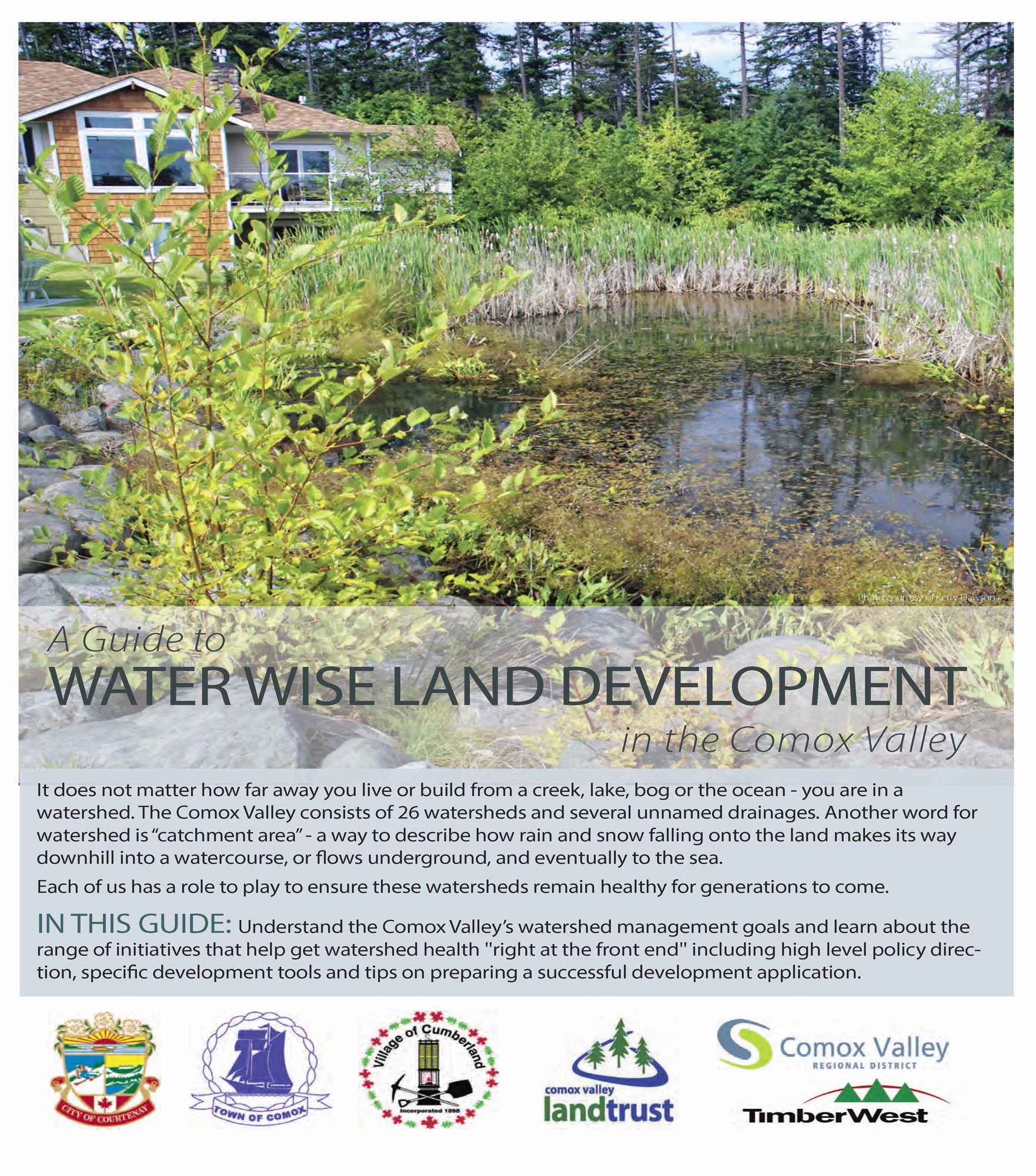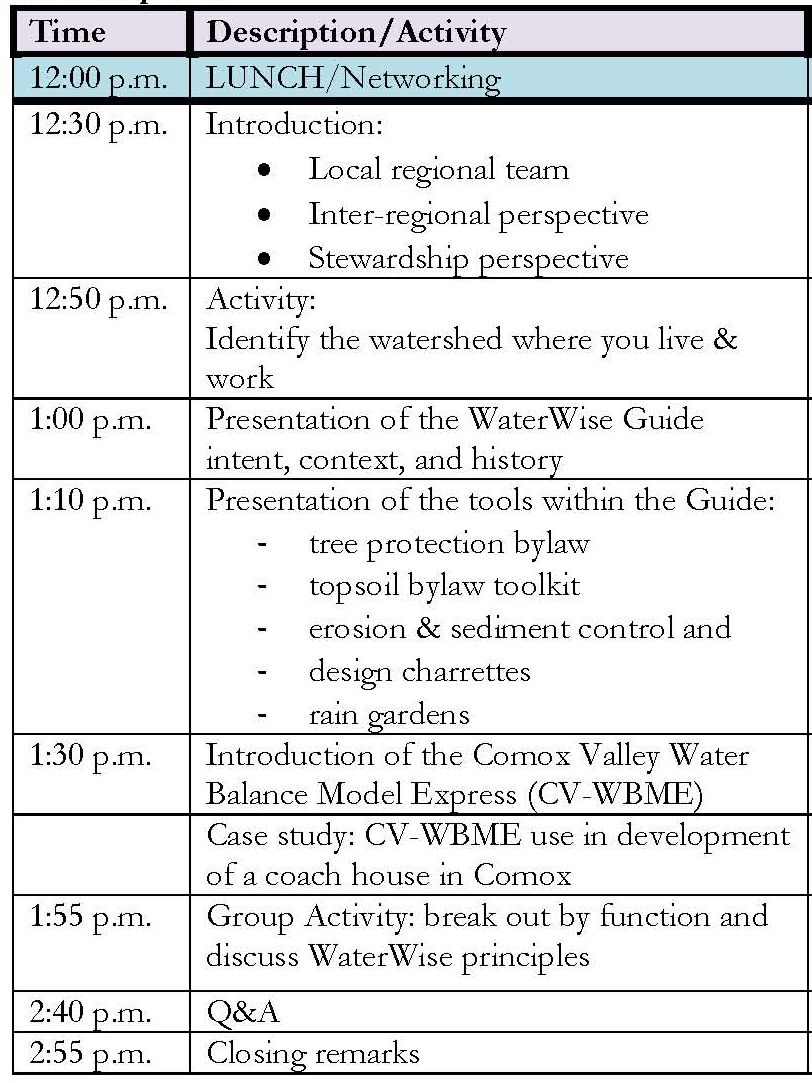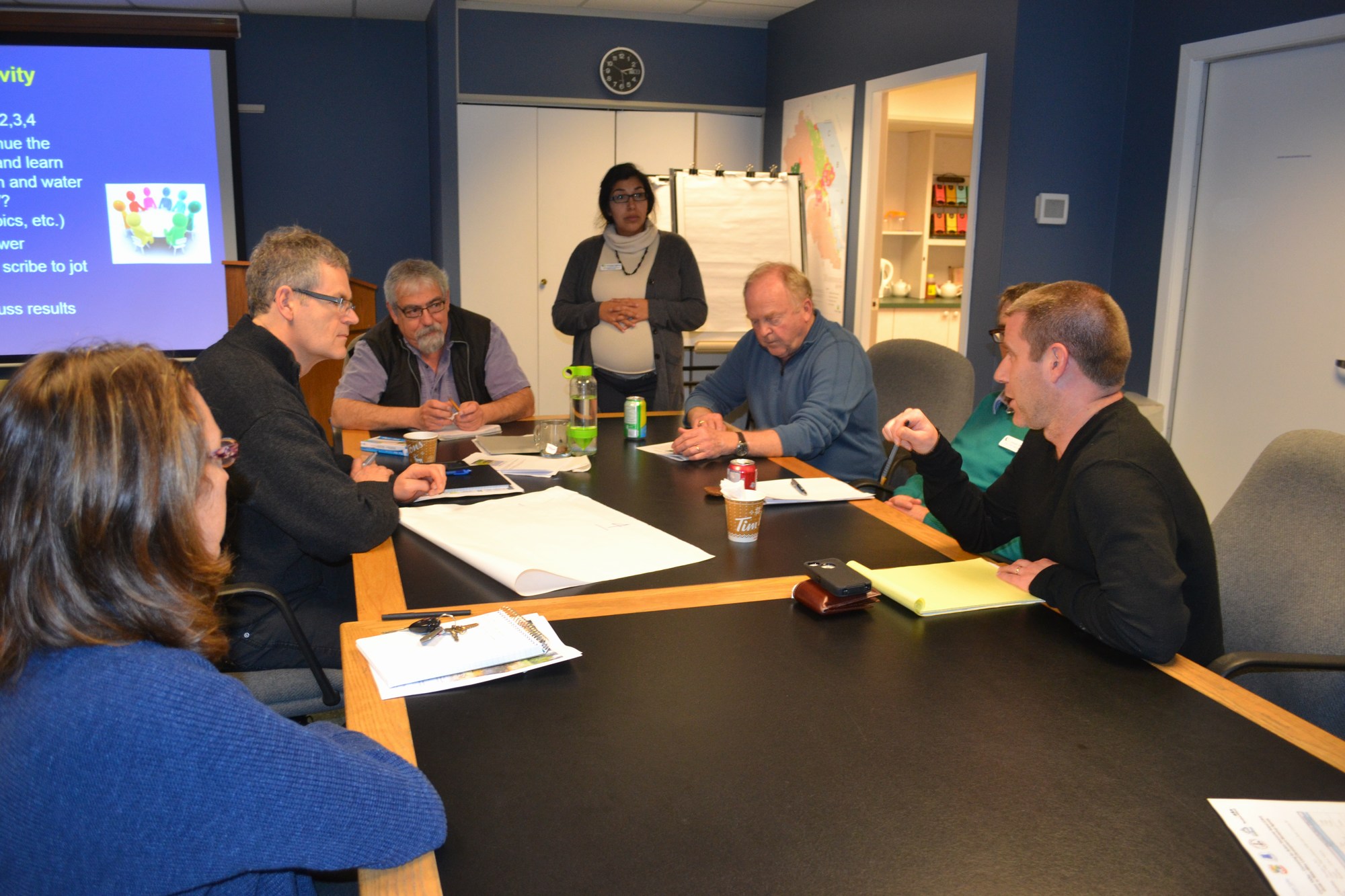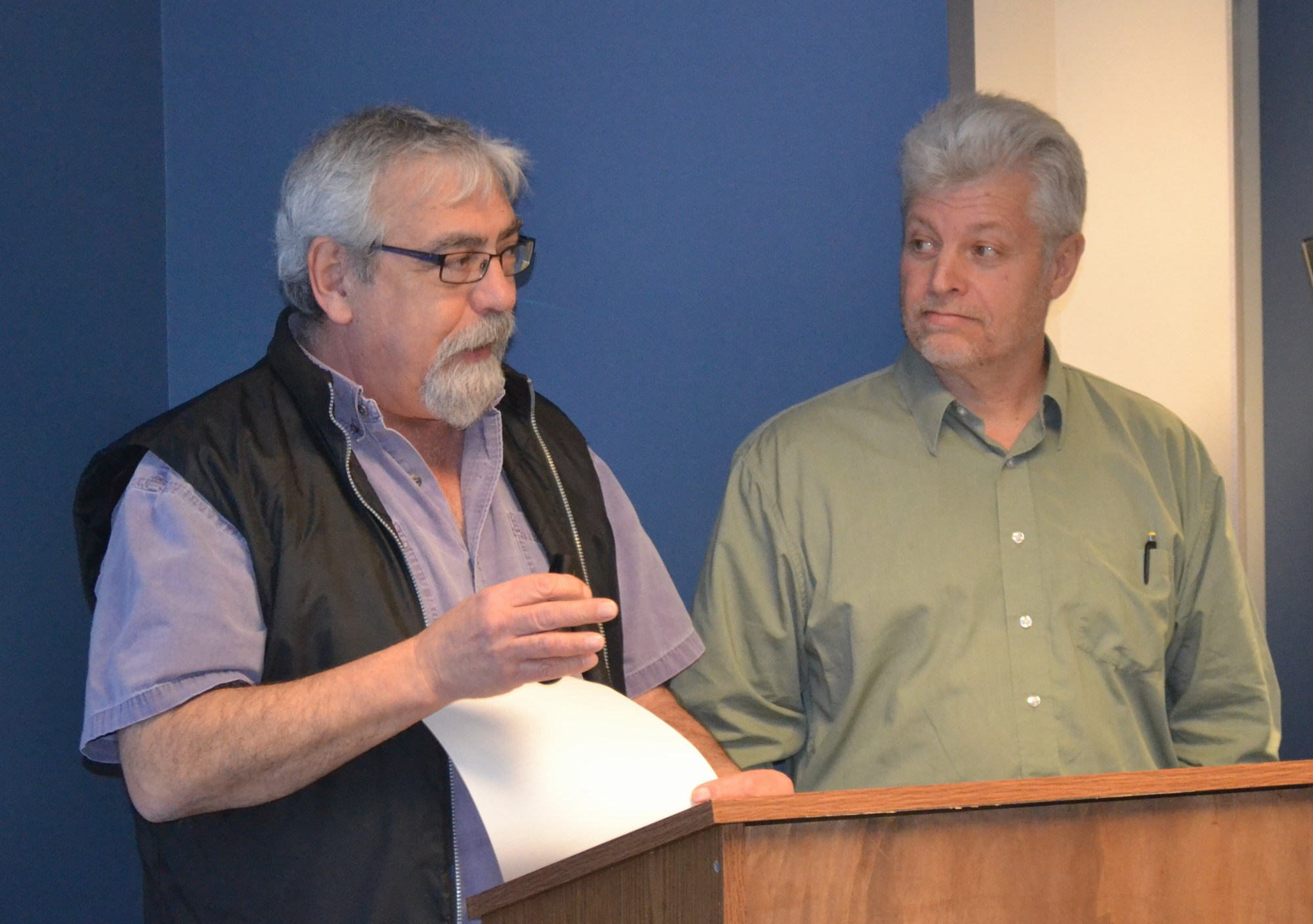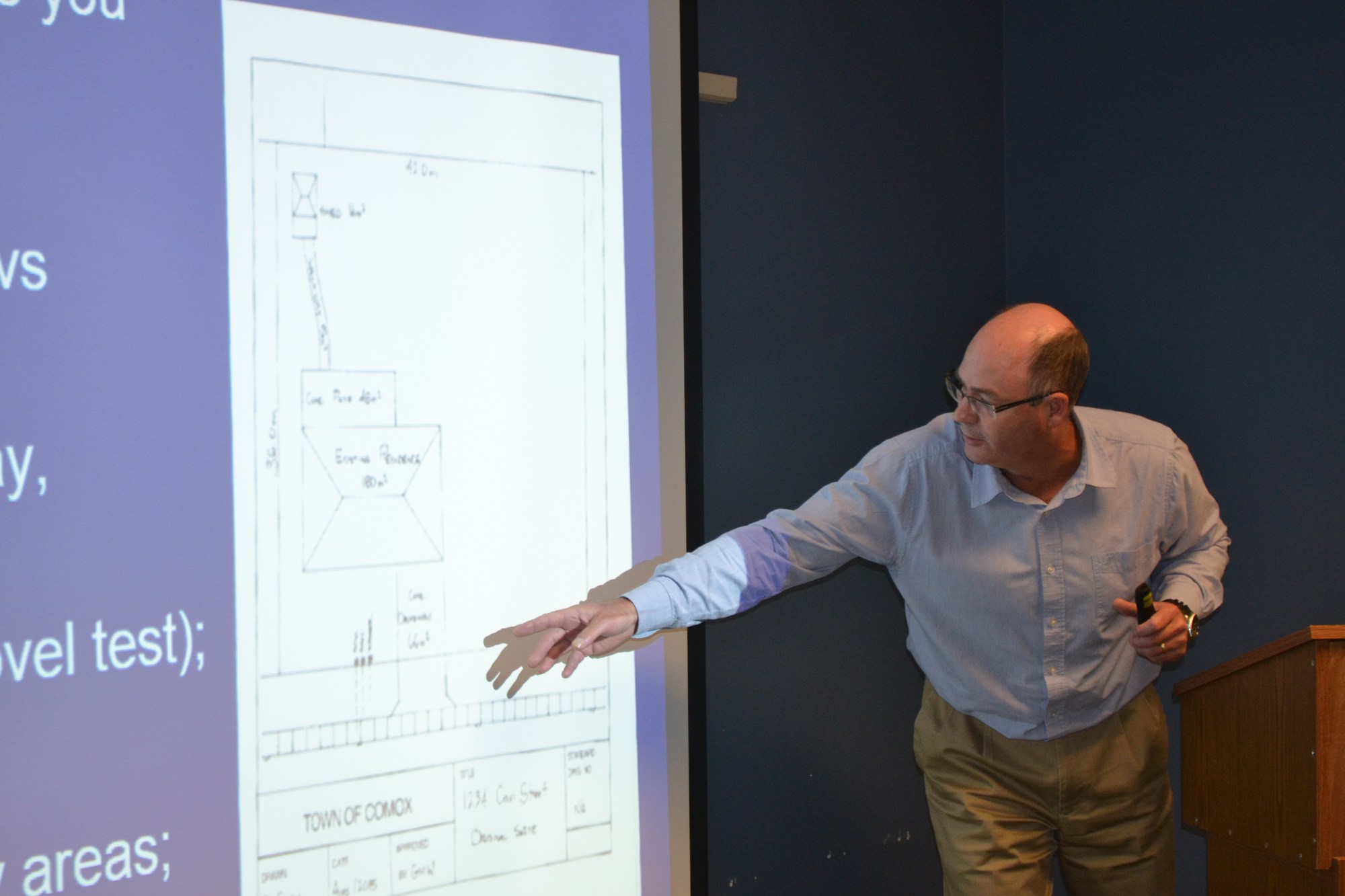FLASHBACK TO 2015: “A Guide to Water-Wise Land Development in the Comox Valley” – Joint Staff Training Workshop organized by the Comox Valley Regional Team initiated an educational process for communicating ‘design with nature’ expectations in urban watersheds
Note to Reader:
The Comox Valley demonstrated a ‘regional team approach’ when a convergence of interests created an opportunity for all the players to set their sights on the common good, challenge the old barriers of jurisdictional interests, and make water sustainability real.
The paradigm-shift was accomplished through annual Comox Valley Learning Lunch Seminar Series, the first of which was hosted by the City of Courtenay in 2008. During the period 2008 through 2011, the series were open to all. Beginning in 2012, however, the process was an internal one. The goal was to move from awareness to action. An outcome was A Guide to Water-Wise Development in the Comox Valley.
Formal rollout of the Guide commenced with a Joint Staff Training Workshop that was hosted by the Comox Valley Regional District (CVRD) on December 10, 2015.
A Provincial Demonstration Region
In September 2006, the CAVI-Convening for Action on Vancouver Island initiative was launched. Originally co-funded by the Province and the Real Estate Foundation over a multi-year period to demonstrate what could be achieved through collaboration, the launch of CAVI set the stage for convening for action in the Comox Valley.
In June 2008, Comox Valley local governments volunteered to be a ‘demonstration application’ for exploration of a regional team approach that would be guided by the Living Water Smart target for watershed health. And so the CAVI-Comox Valley Regional Team was formed and embarked on a journey together.
To Learn More:

Water-Wise Land Development
Inspired by the work of the Bowker Creek Initiative in the Capital Regional District, the Comox Valley-CAVI Regional Team undertook an educational process in 2012 that resulted in “A Guide to Water-Wise Land Development in the Comox Valley”.
This guidance document establishes expectations and was first showcased in June 2014 to an inter-regional audience. Formal rollout of the Guide commenced with a Joint Staff Training Workshop in December 2015. Workshop highlights follow the Workshop Agenda below.
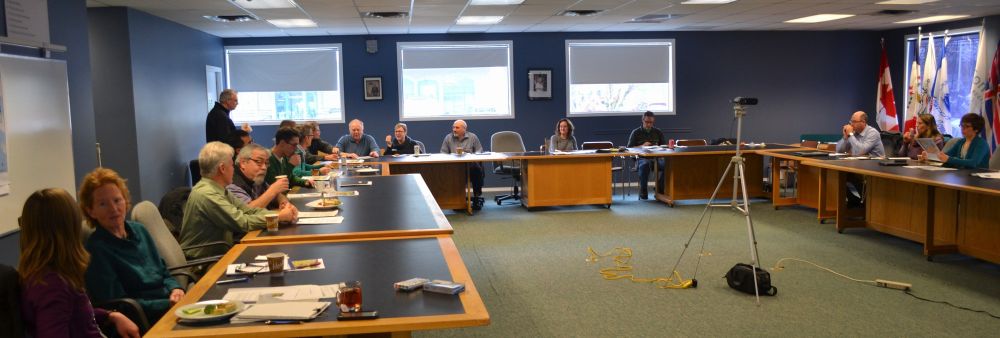
Joint Staff Workshop
The Joint Staff Workshop held in December 2015 had three desired outcomes:
- Commence the internal rollout of the Guide to Water-Wise Land Development, with emphasis on how the strategies and tools presented in the Guide can be applied by each of the partner jurisdictions.
- Showcase application of the Water Balance Model Express for Landowners, an online tool developed by an inter-governmental partnership to enable local governments and property owners to fulfill provincial expectations and objectives established in Living Water Smart, BC’s Water Plan.
- Solicit ideas and input from staff representatives on how best to continue the internal conversations within each jurisdiction so that all staff can “share and learn” about how to achieve watershed health and water conservation goals in the Comox Valley.
“All four Comox Valley local governments, the Ministry of Transportation and Infrastructure, and the stewardship sector participated in the workshop,” stated Kim Stephens, workshop facilitator and Executive Director, Partnership for Water Sustainability in BC.
 “The passion of the regional team came through in their individual presentations. Their enthusiasm infected the audience in a good way. The moment everyone broke into discussion groups one could feel the energy in the room. It was apparent that the workshop content was resonating. At the workshop conclusion, it was clear that the session had achieved a transformative outcome. Now the challenge for the regional team is to sustain the energy to really build momentum.”
“The passion of the regional team came through in their individual presentations. Their enthusiasm infected the audience in a good way. The moment everyone broke into discussion groups one could feel the energy in the room. It was apparent that the workshop content was resonating. At the workshop conclusion, it was clear that the session had achieved a transformative outcome. Now the challenge for the regional team is to sustain the energy to really build momentum.”
To Learn More:
To download a PDF copy of the PowerPoint presentation that guided the workshop proceedings, click on Joint Staff Training Workshop on “How to Use the Guide” (27 MB).
To view a set of YouTube videos, visit https://waterbucket.ca/viw/category/joint-staff-workshop/
Why a Water-Wise Guide
“The Water-Wise Guide communicates consistent expectations for how the valley can mitigate environmental concerns,” stated Kris La Rose, Chair of the Comox Valley-CAVI Regional Team. He is the Manager of Liquid Waste Planning, Comox Valley Regional District.
Through Collaboration……
“The Guide is a collaboration between all four local governments, MOTI, the stewardship sector and the private sector and the team members are all here today and excited to tell you all about it, and to take the first step in developing the relationship with all of you which will be necessary to  successfully implement the Guide locally.
successfully implement the Guide locally.
“It is designed to be visually engaging, easy to read, have front counter ‘branding’ consistent to all four local government planning counters, with tips for applicants on how to prepare successful plans that integrate watershed-based rainwater management strategies and minimize negative impacts on watersheds.
“The City of Courtenay’s Nancy Gothard played the lead role in pulling together the Guide. Her efforts have made such a difference.”
Consistent Expectations
What the Guide is for….
Brand the Story and Make it Visible
“In my presentation, I expanded on the process that went into making the Guide, in order to share some of the learning that went along the way,” continued Nancy Gothard. “But first – I explained ‘what the guide is for?’. Simply put, it is a communication tool. But more than that, it is a call to action as a general awareness tool, as well as an invitation to applicants to prepare applications that are as rainwater friendly as they can.
 “Some staff will use this guide much more than others, and will be responsible for administering some of the tools contained within – particularly the development services (planning and engineering). However, it’s important that ALL staff who work with land development and operations are aware of the guide and can reference its intent generally. Broad awareness across our many departments, across our jurisdictions.
“Some staff will use this guide much more than others, and will be responsible for administering some of the tools contained within – particularly the development services (planning and engineering). However, it’s important that ALL staff who work with land development and operations are aware of the guide and can reference its intent generally. Broad awareness across our many departments, across our jurisdictions.
“So why a guide in the first place? We recognized that as a starting point we needed a way to communicate the story of why watershed-based (ecosystem-based) planning is necessary, the strategies available to us, and roles that each audience plays to achieve it. The main message of this document is that if an applicant takes the time to consider these factors, and get their application right at the front end, and work collaboratively with us regulators, that ideally their project should proceed smoother.
“So, our goal was to begin to brand the story and to make it visible in the various regulatory agencies in the Valley. To depict visually that we were developing a consistency in expectations in how development would address environmental concerns. Having it available on every front counter and every website is a first step.”
To Learn More:
To download a copy of A Guide to Water-Wise Land Development in the Comox Valley, CLICK HERE.
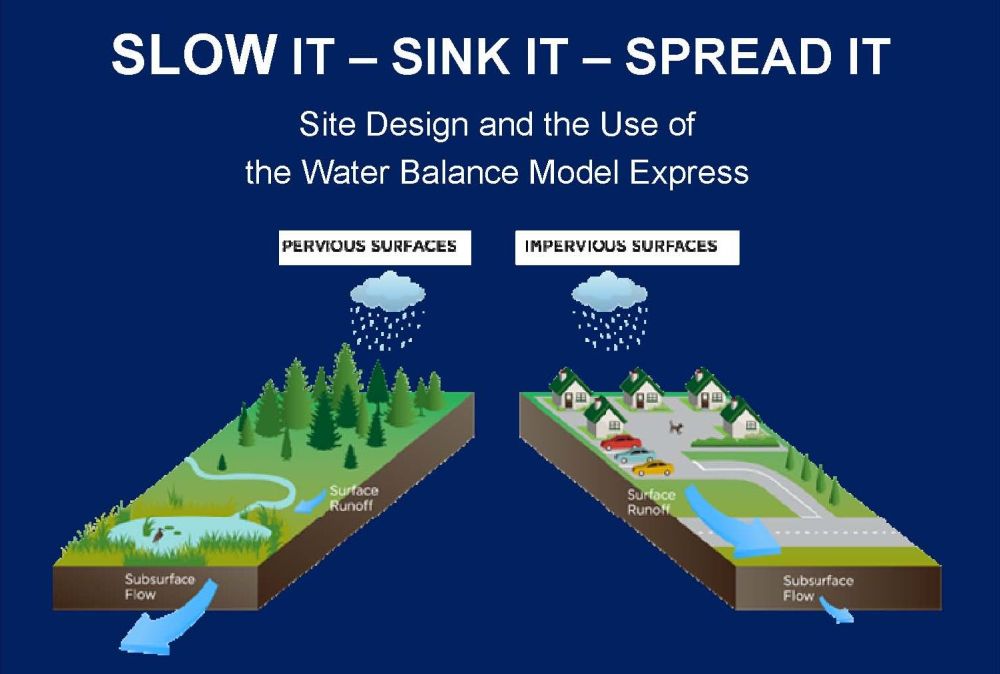
Why the Water Balance Express
“The Water Balance Model Express is primarily intended as an online tool for property owners,” stated Kris La Rose. He and Glenn Westendorp (Superintendent, Town of Comox) tag-teamed to explain and demonstrate the Express. “It utilizes pre-set and watershed-specific performance targets to guide users through a simple and visually oriented set of sizing options for rain gardens, cisterns, infiltration swales and landscaping.”
Slow It, Sink It, Spread It
“The tool helps property owners quantify how well their properties can or will slow, sink and spread rainwater runoff to meet the watershed targets,” continued Kris La Rose. “This will assist with related front counter inquiries of the participating municipalities as well as allow property owners to explore online opportunities to make their specific property more watershed-friendly.”
“ Slow it, sink it, spread it. This is a simple saying that summarizes the means by which we can manage rainwater to alleviate both drought and flooding. This saying also summarizes the purpose behind the Water Balance Model Express,” noted Glenn Westendorp when he set the scene for a case study application of the Express .
Slow it, sink it, spread it. This is a simple saying that summarizes the means by which we can manage rainwater to alleviate both drought and flooding. This saying also summarizes the purpose behind the Water Balance Model Express,” noted Glenn Westendorp when he set the scene for a case study application of the Express .
“Faced with ever increasing extremes in our weather, and limited resources to address these extremes, we need to initiate a change in our land use. The Water-Wise Guide and the Water Balance Express provide us the means to engage and educate homeowners and the development community on what is possible.”
What is Possible
Continuing the Conversation & Moving Forward Collaboratively
“The Joint Staff Workshop is intended to begin an ongoing dialogue/collaboration between local government staff, facilitated by the Comox Valley-CAVI team, to more effectively move all four local governments forward towards healthy, resilient local natural infrastructure,” stated Kris La Rose in setting the stage for the brainstorming segment of the workshop.
Process & Outcomes
 “Participants broke into four smaller groups to discuss what knowledge they had gained at the workshop and relay what they would like to learn more about,” explains Alexandra Hitchcock, CVRD Engineering Analyst. “Out of this process came a selection of ideas and suggestions to implement ‘collaboration communication’ sessions. The groups identified two types – inter-jurisdictional (such as ‘lunch & learn’ meetings on specific topics); and external (such as neighbourhood watershed meetings.”
“Participants broke into four smaller groups to discuss what knowledge they had gained at the workshop and relay what they would like to learn more about,” explains Alexandra Hitchcock, CVRD Engineering Analyst. “Out of this process came a selection of ideas and suggestions to implement ‘collaboration communication’ sessions. The groups identified two types – inter-jurisdictional (such as ‘lunch & learn’ meetings on specific topics); and external (such as neighbourhood watershed meetings.”
A Ministry of Transportation and Infrastructure Perspective
 “The workshop went really well and the two MOTI Area Managers who attended with me found it very useful,” commented Anne Molony, District Development Technician with the Courtenay Office of the Ministry of Transportation and Infrastructure. Anne Molony is completing a Master’s thesis on rainwater management as part of her post-graduate work at Royal Roads University.
“The workshop went really well and the two MOTI Area Managers who attended with me found it very useful,” commented Anne Molony, District Development Technician with the Courtenay Office of the Ministry of Transportation and Infrastructure. Anne Molony is completing a Master’s thesis on rainwater management as part of her post-graduate work at Royal Roads University.
“Rainwater management/drainage is a challenge our Ministry deals with all the time and is a topic that we chat about on a regular basis,” emphasized Anne.
What Next
“Clearly, we achieved our objectives in holding the Joint Staff Workshop,” concluded Kris La Rose. “All four local governments participated. Other members of staff are now part of the conversation. Now it is matter of implementing ideas for continuing the conversation so that staffs in all four jurisdictions will have a shared understanding of watershed health issues and solutions.”
To Learn More:
To download a copy of the ideas and suggestions that the group had for “continuing the conversation”, click on WORKSHOP SUMMARY.



